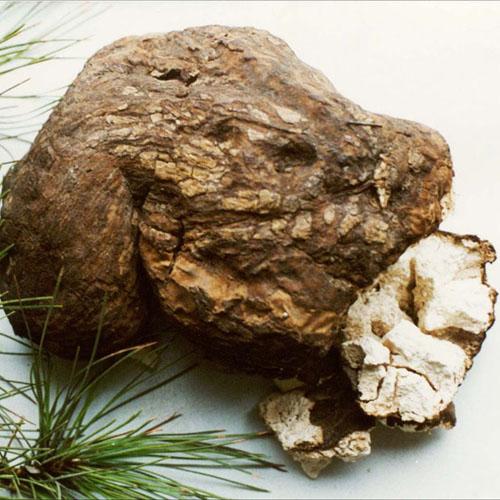|
by Ward W. Bond, PhD
Eat Smaller Meals More Frequently Loading up our bodies with food three times a day is a cultural habit, not a biological need. Instead, eating smaller portions four to five times a day delivers a steady stream of nutrients, blood sugar, and energy to the body throughout the day. Less taxing on the digestive and metabolic systems, smaller meals prevent overloading and excess waste accumulation. Yet another benefit: dividing caloric intake in this way reduces your risk of heart disease. Stop Eating Dead Food! Ever wonder what Wonder Bread is really made of, or how many miles that head of limp lettuce have traveled? There’s nothing like fresh, whole, organic foods to maintain your health and well-being. Farm-fresh produce and meats go directly from the source to your table, leaving little time in between for nutrients to be lost. Many foods at your supermarket have been picked or slaughtered weeks or even months before they make it onto the shelf. These items are preserved by nitrogen or other artificial means, making them appear fresh. Moreover, foods treated with pesticides and artificial fertilizers have lower nutritional value then organically grown foods. Happy Apple Apples are my favorite fruit. The apple, a very popular fruit has long been a symbol of passion and temptation – and now, scientists have confirmed that it also contributes to a healthy heart. Eating two to three apples per day results in decreased cholesterol levels, thanks to the fruit’s rich pectin content. Pectin also helps prevent colon cancer, which ranks among the top causes of death in adults over the age of sixty. Apples are the perfect exercise and fitness food too. Apples increase stamina, endurance and improve strength of your muscles.
0 Comments
by Ward W. Bond, PhD
Over the years many of my clients have suffered with diminished kidney function with high creatinine levels and over spilling of protein. Much of this problem is caused by chronic high blood pressure or diabetes or a combination of both. Once someone is diagnosed with weak kidney function, most of medical science just shrugs its shoulders and waits for the patient to eventually be placed on dialysis. Diminished kidney function does not have to lead to eventual dialysis, but can actually be reversed. What I’m about to teach you is two simple nutrients that have helped people with diminished kidney function one hundred percent of the time, especially when linked to high blood pressure and/or diabetes. If you have either or both conditions, you need to consult your doctor and get it under control. What Kidneys Do The kidneys are very complex organs that process about one liter of blood every minute, filtering out wastes and delivering them to the bladder as urine to be excreted. They maintain the correct balance of fluids, minerals, nutrients, and acid in the body. Of particular importance is their role in regulating the body's water balance and salt balance, both of which are critical for good health and for life itself. If either one gets thrown far enough off, you die. Chronic kidney failure - the gradual loss of kidney function, resulting in potassium retention (which can cause cardiac arrest) and the buildup of metabolic wastes in the blood - is most often caused by diabetes or high blood pressure. It is a serious problem, and anything that can forestall it is worth investigating. (May 2000 Life Extension - Arginine Keeps Kidneys in the Pink) The Nutrients Asparagus: This can be eaten as food or an extract is available. Asparagus is considered a therapeutic herb and contains vital nutrients such as vitamins A, B, C, E, folic acid and minerals calcium, chromium, iron, phosphorus, potassium, magnesium, selenium, zinc, iodine, manganese, sulfur and silicon. Asparagus has many other properties too. Asparagin, Asparagosides, Asparagusic acid, bitter properties, flavonoids such as rutin, qurecetin, kaempferol; Glycolic acid, Glycosides, Saponins, and Tyrosin. The wonder of foods and plants as medicine is the synergistic effect the nutrients contained inside. Because it contains the amino acid asparagine, as well as chromium, a trace mineral that helps insulin do its job transporting glucose making it a perfect anti-diabetic food. It’s especially rich in glutathione, a detoxifying compound that can help destroy carcinogens. For this reason, asparagus may help fight or protect against certain cancers, including bone, breast, lung and colon cancers. This is a power-packed food and we should all be eating it! Asparagus is very healing to the kidneys and here’s why. Asparagus can act as a natural diuretic, according to a 2010 study published in the West Indian Medical Journal. This can help rid the body of excess salt and fluid, making it especially good for people suffering from excess water retention. This vegetable acts as a natural antiseptic to help prevent bacterial infections and can help reduce the formation of kidney stones. By being faithful in eating it or taking the standardized extract, many people see the improvement in their kidney function. It is vital to everyone with diminished kidney function caused by high blood pressure, diabetes and poor eating habits. Next up and I like to use this amino acid in conjunction with Asparagus is Arginine. Arginine has beneficial effects on the kidneys - specifically, on their ability to filter wastes, to maintain sodium and water balance, and to maintain neurohormonal balance. Those who suffer with high blood pressure will benefit by using arginine as this amino acid can help reduce overall blood pressure and help reduce that pressure in the kidneys due to its ability to produce nitric oxide. The heart and the kidneys are connected and if one if not functioning correctly it will affect the other organ. The importance of using arginine cannot be understated as it helps keep the internal tissues of the kidneys healthy. As I have said in the beginning many of my clients have used this simple combination with great success. I encourage them to go see their doctor on a regular basis sometimes on a monthly basis until their doctor is satisfied that their kidney function is where it should be. Nature is amazing as the medicine is right there in front of us, but the actions of this type of natural medicine is simple beyond comprehension. Every vitamin, mineral, antioxidant, flavonoids, amino acids working together in perfect harmony resurrecting better health in anyone who partakes of its power. Dosages: Asparagus Standard Extract: 150-200mg 2-3 times per day. Arginine 500mg: 1000mg twice daily on empty stomach. If you have or suspect that you have a medical problem, promptly contact your health care provider. Information and statements regarding dietary supplements have not been evaluated by the Food and Drug Administration and are not intended to diagnose, treat, cure, or prevent any disease. Peppermint is a hybrid mint, a cross between watermint and spearmint. The plant, indigenous to Europe and the Middle East, is now widespread in cultivation in many regions of the world. It is found wild occasionally with its parent species.
Stop the Nausea! Peppermint reduces nausea and vomiting. It activates the enzymes needed for digestion, which in turn minimizes nausea. According to a 1997 study at Liverpool University in England, peppermint can effectively relieve post-operative nausea. Slowly sip a cup of warm peppermint tea to reduce nausea. Some people can also suck on a hard peppermint candy, but using real peppermint will do the trick naturally. Put a few drops of peppermint essential oil on a handkerchief and inhale using deep breaths. Irritable Bowel Syndrome: A True Life Saver Every client that has ever come to me about IBS, I have recommended enteric-coated peppermint oil capsules. This is the number remedy in Europe for this condition and it should be number one in the USA too. In a 2007 study published in the Digestive and Liver Diseases journal, researchers found that a 4-week treatment with peppermint oil could improve abdominal symptoms in patients with IBS. It can even treat similar symptoms of lactose intolerance or celiac disease. Peppermint treats symptoms of irritable bowel syndrome (IBS), such as stomach cramps and bloating. It helps relax the esophageal sphincter, which reduces IBS symptoms. In addition, it helps food pass through the stomach easily. You can drink peppermint tea a few times a day. To make the tea, add 1 teaspoon of dried peppermint leaves to a cup of boiling water. Cover and steep for 10 minutes. Strain and drink it. Prevents Allergies and Asthma Peppermint also helps ease allergy and asthma symptoms. Being an expectorant, it encourages the body to eliminate mucus from the airways, lungs, bronchi and trachea. This relieves asthma symptoms. It is a great relaxant and relieves congestion during allergy season. In addition, peppermint has anti-inflammatory, antioxidant and antimicrobial properties that prevent allergic reactions. If you are suffering from a cough, add a drop of peppermint oil to a pot of hot water and inhale the steam. Mix a few drops of peppermint oil with coconut oil. Rub it on your chest, neck and nose to unclog your sinuses and enjoy relaxed breathing. You can also enjoy a few cups of peppermint tea daily to get rid of allergy and asthma symptoms. Alleviates Headaches Peppermint also helps alleviate different types of headaches, such as migraines, stress-related or tension headaches. This herb has significant analgesic effects that help reduce sensitivity to pain. It can also improve blood circulation and relax tense muscles. Applying peppermint oil to the temples, back of the sides of the neck and inhaling the aroma from the oil can help with stress headaches and improve relaxation. In a 1994 study published in Cephalalgia – An International Journal of Headache, a combination of peppermint oil and ethanol showed significant reduction in sensitivity to headaches. Studies have also found the refreshing peppermint aroma to be helpful in improving memory and alertness. Using a room diffuser with peppermint oil may help to bring healing from headaches and stress after a long day at work or school. Oral Health: Fresh Breath and a Healthy Mouth Peppermint has antibacterial action that inhibits the growth of bacteria in the mouth, helping to prevent tooth decay, gum disease and other oral problems. And it helps with one’s breath. Chewing the leaves of peppermint daily to keep oral problems at bay. You can also use toothpaste or mouthwash containing natural peppermint oil to brush your teeth and rinse your mouth. A strong cup of peppermint tea, cool it and then use it to rinse your mouth once daily works very well too. Used for over 2,000 years, Chinese Poria (Sclerotium poriae cocos) is commonly used in many clinical formulas but also the production of numerous Chinese patent medicines. Poria is now available to everyone, not just the royal families of China.
The common form of poria fungus is its sclerotium, most of which are in the shape of irregular chunk, sphere, oblong, or oval. The skin is grayish brown or dark brown, in the shape of shrinking tumor, white with slightly pin inside, and composed of numerous hyphae. Fruiting body looks like mushroom, 0.5 to 2mm in diameter. Main chemical constituents of poria sclerotium:
Poria cocos benefits Poria cocos fungus has a long history of being used medicinally in China. Since ancient times people are accustomed to grinding it into powder as medicine or for health care by consuming it on daily basis. Due to the expensive production cost, very few families could afford it. Now we have a different story. This herb is so economical and practical that everyone is entitled its health benefits. Modern Pharmacological Actions 1. Chronic Kidney Disease. In the research presented by Sensuke Konno, Ph.D., Department of Urology, New York Medical College. Twenty-six million Americans suffer from chronic kidney disease, with three million new cases each year. There is no known direct cause for chronic kidney disease, but those with diabetes and high blood pressure are at an elevated risk. Poria may have the potential to help many people, a bioactive extract of Poria cocos was tested on epithelial cell cultures. The study’s hypothesis was that if kidney disease is triggered by oxidative stress, Poria, as an antioxidant, would protect the epithelial cells against free radicals. Results showed that cell viability was increased by 25% when cell cultures were exposed to oxidative stress and the severity of oxidative stress was even reduced by 35%. In addition, Poria partially prevented the disruption of the cell cycle which also results from oxidative stress. 2. Antibacterial effect: If you take a look Poria’s properties such the caprylic acid, lauric acid, caprylate. These are known antivirals, antibacterials and antifungals. Yes, a fungus such as mushroom can be used to fight…fungus! More research on this herb is ongoing, but it shows tremendous promise. 3. Effects on the digestive system: This herb can directly relax the isolated rabbit intestine, prevent pylorus ligation-induced gastric ulcer in rats, and reduce stomach acid. This could help millions of people who suffer with H. Pylori bacteria. Most of the antibiotic therapies to combat this bacteria are usually ineffective leading to overuse of powerful antibiotics. 4. Blood Sugar and Congestive Heart Failure: It can lower blood sugar. Its tincture and infusion can inhibit the isolated toad heart. Poria cocos extract by ether or ethanol can strengthen cardiac contractility. But it showed no antiemetic effect to digitalis induced vomiting. 5. Alzheimer's Disease: Preliminary research shows that poria may help fight Alzheimer's disease. In a 2009 study published in the German journal Die Pharmazie, tests on rat cells demonstrated that poria may inhibit Alzheimer's development by reducing oxidative stress. 6. Cancer: Several studies on human cells indicate that poria may possess anti-tumor properties and could help fight some forms of cancer (including pancreatic and breast cancer). However, more research is needed to see if poria can aid in cancer prevention. Tradition Chinese medicine (TCM) believes that this herb is sweet and tasteless in flavor and neutral in properties. It covers meridians of heart, lung, spleen, and kidney. Its key functions are percolating dampness and disinhibiting water, strengthening the spleen and stomach, and tranquilizing heart and soothe the nerves. Vital poria uses and indications include difficult urination, edema-induced swelling, choking cough caused by phlegm and retained fluid, vomiting, reduced appetite due to spleen deficiency, diarrhea, palpitations, anxiety, insomnia, forgetfulness, and nocturnal emission, gonorrhea, and so on. Recommended dosage is from 10 to 15 grams in decoction. Poria is available on the American market by Mushroom Wisdom, a company whose main focus is on intense research on the use of Chinese Medicinal Mushrooms. by Ward W. Bond, PhD
Many times I have spoken about fibromyalgia on my television program ‘Think Natural’ and people are getting the message that one doesn’t have to live with it forever. What is Fibromyalgia? According to WebMD and others, fibromyalgia is the most common musculoskeletal condition after osteoarthritis. Still, it is often misdiagnosed and misunderstood. Its characteristics include widespread muscle and joint pain and fatigue, as well as other symptoms. Fibromyalgia can lead to depression. What is alarming that the term ‘common’ is used here? When did this condition become common? Enter the rise of chronic stress and poor eating habits. Fibromyalgia has been called an autoimmune disease in which the immune system becomes overactive and attacks particular parts of the body. Since this hasn’t been truly proven to be an autoimmune disease yet, this condition does cause a suppression of the mitochondria within the cells. The mitochondria is the little energy factory within each of our cells. When they are suppressed, the mitochondria cannot generate the energy that our cells need to do their jobs. Mitochondria generate chemical energy, similar to the type of energy you get from a battery. The energy made by the mitochondria is in the form of a chemical called adenosine triphosphate or ATP for short. ATP is an energy currency that every cell in our body can use and it keeps us alive. In fibromyalgia, the ATP can be suppressed leading to chronic fatigue and muscle soreness as it lacks the ability to contract and relax properly. Fibromyalgia is where the muscles become very tight creating pain that is radiating from the nerves it is squeezing. People wake up every morning stiff and the muscle ‘knotted’ up and yes chronic pain. The Remedy Lives in You When we are born, we are born with healthy mitochondria and we are producing a natural substance called D-ribose. This five carbon sugar is vital for overall life, energy and proper contraction and relaxation of our muscles. Without it we would be alive with rigor mortis! D-Ribose is the Natural Answer When it comes to treating fibromyalgia all the avenues must be looked at first such as chronic stress, traumatic events, heavy metal toxicity, leaky gut syndrome and poor diet to effectively overcome this condition. If chronic stress or a traumatic event happened in one’s life and fibromyalgia was triggered then D-ribose should be part of the nutritional therapy. Many of my clients have seen a 80-100% reduction in pain and an increase in energy. I suggest adding magnesium to the regimen as magnesium is highly deficient in those with fibromyalgia. Magnesium is called the ‘relaxing mineral’ for good reason. The proper dose of D-Ribove is 5 grams three times per day. This is the type of nutrient that the more faithful you are taking it, the sooner you will feel a difference. The safety is unmatched as I tell all my viewers and clients that we are born with this much needed nutrient. As we grow older or overexert ourselves the body can’t make enough to keep up with demand. D-Ribose is not only great for fibromyalgia, but for congestive heart failure, athletic performance and the everyday person wanting improved health. I personally take it daily myself as D-ribose to stay strong and energized. A company called BioEnergy is the name you want to look for on the back of the label when you shop for D-ribose. When it comes to healing from fibromyalgia, focus on eating enzyme-rich fruits and vegetables, use turmeric daily to help with inflammation. Enzymes are vital for the life, maintanence and detoxification of the body on a daily basis. If you suspect heavy metal toxicity such as mercury, add Cilantro and Chlorella to daily diet as these two will effectively remove mercury from the body safely and effectively. Avoid processed foods, high fructose corn syrup-laden products (found in 42% of all products at the grocery store), red meat and other meats that contain the damaging Omega-6s and counteract these with Omega-3 foods such as walnuts, fish oil, flax oil, krill oil, chia seeds to name a few. The Omega-3s are very effective anti-inflammatories and we should all have these in our daily diet. Fibromyalgia is not the end and there are answers. D-Ribose and healthier diet will get you moving in the right direction. Healing is inside you, grab it and don't let go! |
Archives
May 2022
|





 RSS Feed
RSS Feed